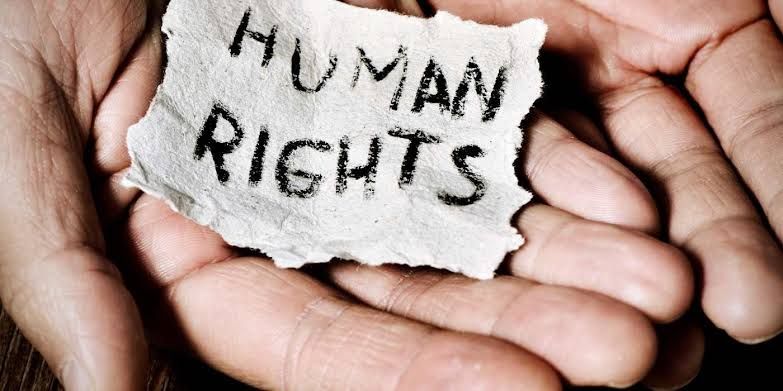Introduction
The fields of public health and human rights are closely related and complement one another. Both fields are concerned with the well-being and dignity of individuals and communities, and they often intersect in various ways. By outlining the freedoms and rights required to achieve dignity for everyone, human rights provide a universal framework for advancing justice in public health. Human rights are inalienable, irrespective of age, gender, caste, or color. The most essential component of a human right is health. Every human being has the fundamental right to a healthy life, which society should uphold and provide. Public health guarantees that no one faces barriers to leading a healthy lifestyle. Let’s intervene in the concept of public health with human rights.
INTERCONNECTION BETWEEN HUMAN RIGHTS AND PUBLIC HEALTH
Right to Health: As stipulated by international law, notably the International Covenant on Economic, Social, and Cultural Rights and the Universal Declaration of Human Rights, the right to health is a fundamental human right. Access to healthcare services, facilities, supplies, and information required to achieve the best possible state of health is included in this right.
Health Equity: The eradication of discrimination in the provision of healthcare and equitable access to health services are mandated by human rights principles. To ensure that marginalized and vulnerable groups have access to necessary healthcare services and resources, public health initiatives frequently concentrate on resolving health inequalities.
Social Determinants of Health: Human rights and public health recognize that social, economic, and environmental factors significantly influence health outcomes. Efforts to address social determinants of health, such as poverty, education, housing, and employment, are essential for promoting both public health and human rights.
Protection of Vulnerable Populations: Human rights frameworks prioritize the protection of vulnerable populations, including children, women, migrants, refugees, persons with disabilities, and ethnic minorities. Public health interventions aimed at improving the health and well-being of these groups contribute to upholding their human rights.
IMPORTANCE
To achieve the overall objective of improving justice and dignity in public health, it is important to integrate human rights into public health initiatives, to position human rights as a fundamental framework for informing policies, transforming the dynamics of power, and to place the responsibility for protecting and fulfilling the rights of individuals on governments.
Human rights as a universal framework for justice in the field of public health: The human rights system is one that can promote equal treatment. It indicates that efforts for achieving justice in the field of public health may be guided by Human Rights Principles, irrespective of geographic location, culture or other differences.
Changing the power dynamic in public health: As a means of transformation, an approach based on rights has been highlighted. They are recognized as rights holders instead of being mere recipients of public actions. This implies a shift in perspective, acknowledging individuals’ agency and entitlements.
Central role of Human Rights in Public Health: According to the concluding point, it is now widely accepted that civil rights law plays a fundamental role in health policy and practice. This indicates that the fundamental role of human rights principles in shaping and guiding public health decisions and actions is recognized.
HEALTH CARE SYSTEM IN INDIA
According to the Indian Constitution, health care services are largely a matter for national governments but have left enough flexibility on the part of the Centre because there are many items listed in an overlapping list. In the area of health care, the Centre has been able to expand its sphere of competence. As a result, the central government has played a far more important role in the health sector than the Constitution requires.
Human rights in health care have a constitutional and legal dimension:
India became a member of the United Nations on 30 October 1945, and was one of the signatories to the Universal Declaration of Human Rights, UDHR, on 12 December 1948, when it was proclaimed. The UDHR has undoubtedly had an impact on the formulation of India’s Constitution, and this is evident in fundamental rights as well as Directive Principles from State policy. The Constitution and the laws of the land do not confer on health and health care the status of rights when it comes to the right to health and health care in the legal and constitutional framework. In cases of law, in emergency situations or in reference to international conventions, the right to life, Article 21 of the Constitution, or other Directive Principles may be used to demand access to health care. At the global level the International Covenant on Economic, Social and Cultural Rights (ICESCR) mandates the right to health through Article 9 and Article 12 of the covenant. On 10 April 1979, India acceded to the Covenant and, in doing so, became obliged to take measures ensuring health and medical care for others as a right. India has not signed this treaty in more than 35 years. Post-ratification efforts through the Sixth Five-year Plan and the first National Health Policy in 1982 were indeed the first steps in honoring this commitment.
IMPORTANCE OF PATIENT’S RIGHT AS A HUMAN RIGHT AND PUBLIC HEALTH
The importance of patients’ rights cannot be overstated, as they form the foundation of ethical and respectful healthcare delivery. Following are the reasons why patient’s rights are crucial:
- Patients have the right to be always treated with dignity and respect. Respecting patients’ rights ensures that they are valued as individuals and are treated with empathy, regardless of their background or medical condition.
- Patients have the right to privacy and confidentiality regarding their medical information. Healthcare providers must maintain the confidentiality of patient records and information, ensuring that sensitive information is not disclosed without the patient’s consent, except in legally mandated situations.
- Patients have the right to access timely, affordable, and quality healthcare services. This includes the right to receive appropriate medical treatment without discrimination based on factors such as race, ethnicity, gender, religion, disability, or socioeconomic status.
- Patients have the right to receive safe, effective, and high-quality healthcare services. Healthcare providers have a responsibility to deliver care that meets professional standards and respects patients’ preferences, values, and cultural beliefs.
- Patients have the right to voice their concerns, complaints, or grievances about their healthcare experiences. Healthcare facilities should have mechanisms in place for addressing patient feedback, resolving disputes, and providing appropriate redress when necessary.
FUNDAMENTAL RIGHTS TO PUBLIC HEALTHCARE
Article 21 of the Indian Constitution is a fundamental right that guarantees the security of the life and individual freedom. The content of Article 21 is:
“No individual shall be denied of his life or personal liberty except for procedure established by law.”
Verifiably, within the early translation of Article 21 until the 1970s, the courts tended to decipher “life” in a literal sense, centering on the right to exist and the right not to be killed. Be that as it may, within the late 1970s, the Apex Court of India started to embrace a broader and more sweeping translation of the term “life” as said in Article 21.
This extended translation recognizes the right to life with nobility and incorporates inside its scope the assurance of different perspectives that contribute to an important and stately life. The Supreme Court has held that the right to life isn’t only a creature presence but the proper to live with human nobility.
“Right to Health” with the broader “Right to Life” and emphasizes the role of the state in ensuring access to medical facilities as a fundamental aspect of these rights.
- The following case law will help in the following ways:
1.To understand the affirmation of the right to health and health care as a fundamental right.
2.It will give us the growing understanding of different aspects of right to health.
- In Municipal Board, Ratlam vs. Vardhichand & Ors, the municipal corporation was arraigned by a few citizens for not clearing up the waste. The organization took up the supplication that it did not have cash. Whereas dismissing the supplication, the Preeminent Court through Justice Krishna Iyer observed:
“The State will realize that Article 47 makes it a vital guideline of administration that steps are taken for the change of open wellbeing as among its essential duties.”
- In 1991, in CESC Ltd. vs. Subash Chandra Bose, (Discuss 1992 SC 573,585) the Apex Court depended on worldwide instrument and concluded that right to health is a crucial right. It was encouraged and held that health isn’t only nonexistence of ailment “The term health infers more than a nonappearance of ailment. Restorative care and healthcare offices not only ensured against affliction but also guaranteed steady labor for financial improvement.” Within the light of Articles. 22 to 25 of the Universal Declaration of Human Rights, International Pledge on economic, Social and cultural Rights and within the light of socio-economic justice guaranteed in our Constitution, right to health may be a principal human right to laborers.
GOVERNMENT INITIATIVES
In 2018 the government of India launched a leading scheme called AYUSHMAN BHARAT to achieve the goals of Universal Health Coverage.
The Public Health Foundation of India was started by Prime Minister in 2006 which inculcated more healthcare facilities and engaged healthcare experts towards policy making. The Public Healthcare Establishment points to advance these programs and teach more individuals in this field. The research discovered would be made transparent to the Indian public at large, so that the entire nation is aware of health standards in the country
CONCLUSION
By and large, the integration of human rights standards into open healthcare approaches and programs is fundamental for progressing healthcare value, social justice, and the well-being of populaces. By recognizing and tending to the social, economic, and political determinants of wellbeing, social orders can work towards accomplishing the total realization of human rights for all people and communities. The assertion that public health may be a human right emphasizes the moral measurement of guaranteeing that all people have the correct to great health. This adjusts with universal statements that recognize the right to health as a crucial human right. Disparity and destitution are distinguished as root causes of sick health, driving to issues such as lack of healthy sustenance and starvation passings, especially among marginalized areas of society. This emphasizes the social determinants of health. The current wellbeing situation is depicted as favoring the urban well-off course, constituting approximately 10% of the full populace. There’s a call for tending to territorial lopsided characteristics to guarantee that wellbeing assets are dispersed more evenhandedly. The exceedingly privatized healthcare framework is criticized for denying most of the populace, driving to out-of-pocket uses that numerous cannot bear. The National Wellbeing Approaches are seen as falling brief of their targets, requiring the improvement of a comprehensive authoritative system. The proposed enactment ought to point to form conditions conducive to reestablishing adjust within the wellbeing division. A pivotal recommendation is to create the ‘Right to Healthcare’, a crucial right, in this manner making it enforceable.
Author: PRACHI GULATI, a Student of VIVEKANANDA INSTITUTE OF PROFESSIONAL STUDIES





